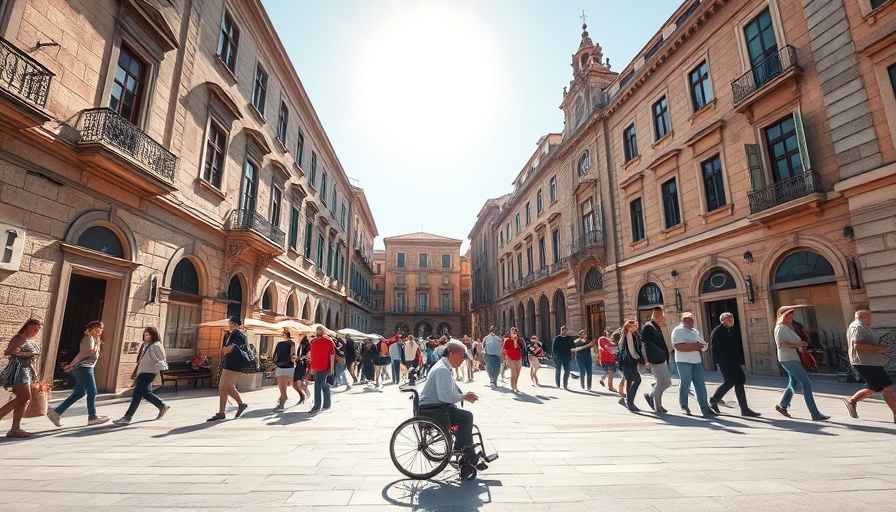
The Rise of Accessible Tourism and Why It Matters
Accessible tourism has rapidly transitioned from a niche market to a booming sector within the global travel industry. With an estimated 1.3 billion people living with disabilities worldwide, and an aging population that is constantly seeking travel opportunities, this movement is much more than a social responsibility — it’s an economic game-changer. As Miguel Carrasco, COO at TUR4all Travel, noted, "accessible tourism is not just an afterthought; it is central to delivering high-quality, dignified travel experiences for everyone".
The Spanish Advantage: Leading the Charge in Accessibility
Spain serves as a prime example in the landscape of accessible tourism. The country is not only a leading destination for international travelers with accessibility needs but also a strong source market luring Spanish travelers seeking inclusive experiences abroad. According to the latest TUR4all Travel Trends Report, Spain emerges as a dynamic player in this niche, effectively carving a space where accessibility meets adventure.
High-Spending Traveler Segments: Who Are They?
The report reveals that American travelers account for the most lucrative inbound market for accessible tourism in Spain, spending €273 daily on average. This is largely driven by a growing appreciation for premium cultural and heritage experiences, showcasing how accessible travel offers both social inclusion and economic benefits.
Understanding the Preferences of Travelers with Accessibility Needs
The demographics of travelers seeking accessible options is shifting. Recently, the senior traveler segment (those aged 60 and over) has dominated both inbound and outbound tourism. However, younger adventurers are also forging their own path, seeking accessible music festivals, sporting events, and thrill-seeking tourism options. This trend signals an evolving desire for varied experiences that transcend traditional travel norms.
The Role of Advancements in Technology
Heightened awareness, accessible information, and new technologies are attributing to the growing popularity of this sector. Platforms like TUR4all Travel offer extensive data on accessibility across accommodations, leisure activities, and transportation, making it easier for families and travelers to plan outings that cater to their unique needs. The integration of innovative technology paves the way for smoother journeys, enhancing the overall travel experience.
Inclusive Travel: More Than Just a Trend
As accessible tourism gains traction, destinations that prioritize universal design and inclusive services are finding themselves at the forefront of this movement. Reports suggest that travelers with accessibility needs are a loyal segment, preferring locations that not only welcome them but enrich their travel experiences. Spain's strong connectivity and diverse offerings underpin its leadership in this movement.
Making Travel Enjoyable for Everyone
The message is loud and clear: focusing on accessible tourism enhances the overall travel experience for everyone involved, not just those who identify as needing support. This focus fosters camaraderie and celebratory experiences for family members, educators, and travel enthusiasts. The convergence of different generations, united by the joy of travel, serves to reinforce the notion that everyone deserves to explore, learn, and enjoy the world.
Call to Action: Embrace Accessible Travel
As we move further into this exciting era of travel, it’s essential for everyone — be it parents, educators, or travel enthusiasts — to embrace the opportunities that accessible tourism presents. The ability to travel safely and enjoyably is vital for fostering shared experiences that shape our loved ones' lives. Together, let's highlight inclusive practices in our travels, designing journeys that inspire and uplift everyone.
 Add Row
Add Row  Add
Add 




Write A Comment